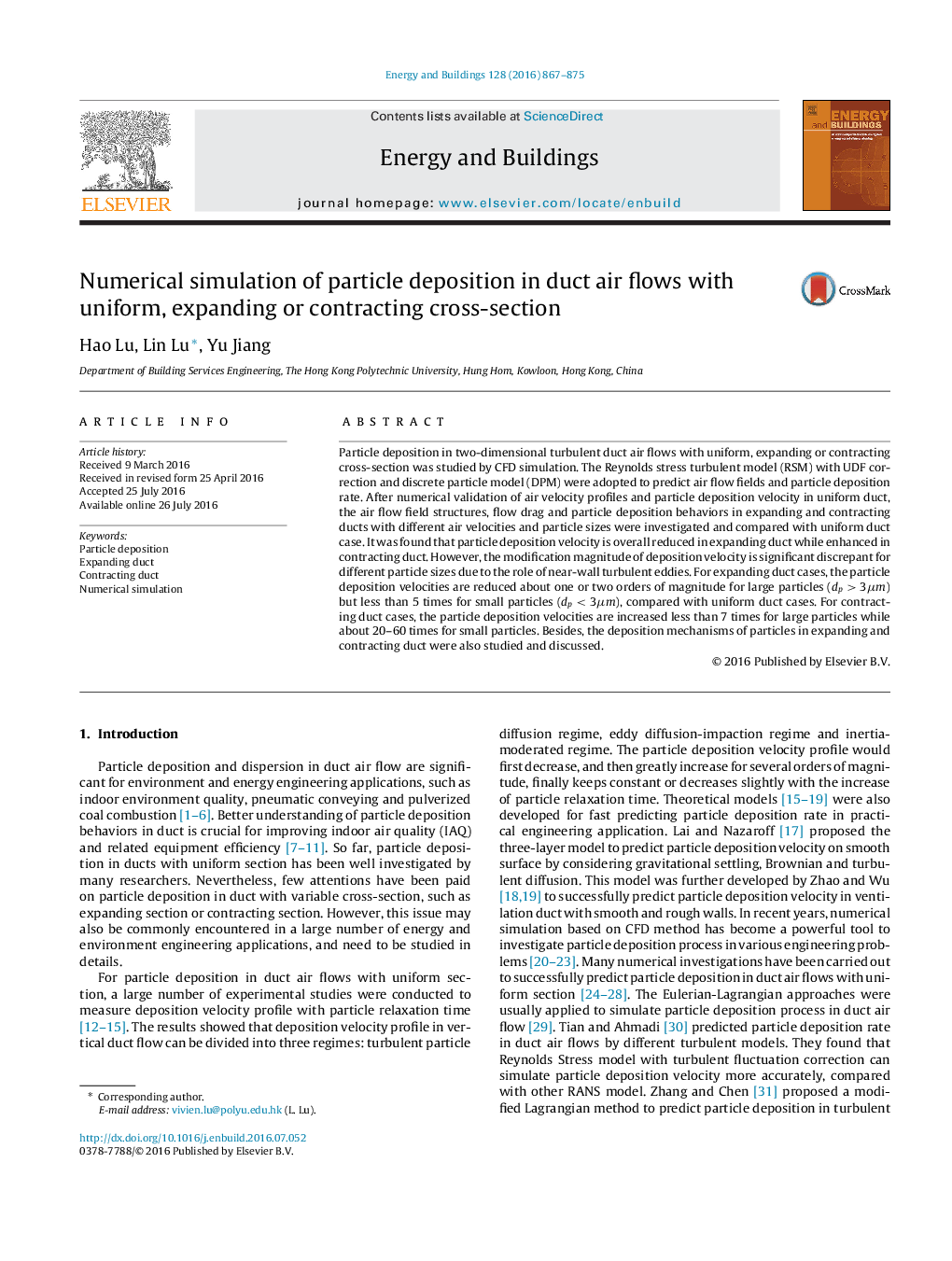| Article ID | Journal | Published Year | Pages | File Type |
|---|---|---|---|---|
| 6729908 | Energy and Buildings | 2016 | 9 Pages |
Abstract
Particle deposition in two-dimensional turbulent duct air flows with uniform, expanding or contracting cross-section was studied by CFD simulation. The Reynolds stress turbulent model (RSM) with UDF correction and discrete particle model (DPM) were adopted to predict air flow fields and particle deposition rate. After numerical validation of air velocity profiles and particle deposition velocity in uniform duct, the air flow field structures, flow drag and particle deposition behaviors in expanding and contracting ducts with different air velocities and particle sizes were investigated and compared with uniform duct case. It was found that particle deposition velocity is overall reduced in expanding duct while enhanced in contracting duct. However, the modification magnitude of deposition velocity is significant discrepant for different particle sizes due to the role of near-wall turbulent eddies. For expanding duct cases, the particle deposition velocities are reduced about one or two orders of magnitude for large particles (dp>3μm) but less than 5 times for small particles (dp<3μm), compared with uniform duct cases. For contracting duct cases, the particle deposition velocities are increased less than 7 times for large particles while about 20-60 times for small particles. Besides, the deposition mechanisms of particles in expanding and contracting duct were also studied and discussed.
Related Topics
Physical Sciences and Engineering
Energy
Renewable Energy, Sustainability and the Environment
Authors
Hao Lu, Lin Lu, Yu Jiang,
